Meet Gertrude, the Garden Spider. I nearly soiled my knickers when I ran into her while harvesting tomatoes one morning. Since Mr. Wild Dingo was traveling, I sent a picture of her to him.
"Look who built a home and moved in on the cherry tomato plant," I wrote. "Her name is Gertrude."
"She's as big as a tomato," He wrote back.
"No, she's not. Don't be silly. She's bigger," I replied.
"I'm not going near that plant," he wrote. (He's such Rough Tough Cream Puff!)
Gertrude is of the species Argiope aurantia, commonly known as a yellow garden spider. Though they look frightening they are fairly harmless, non aggressive to large animals and humans but like anyone, would only bite if grabbed or threatened. Her venom is not harmful to a human and at most would be comparable to a bee sting with red swelling.
Garden spiders are found throughout the world, and are known as orb weavers due to their orb shaped delicate webs. From the zig zag shape in the center of her web, we can tell that Gertrude is indeed a female. Male garden spiders are much smaller than females and their webs are much smaller as well, but are often found close to a female's web.
A garden spider's web is notoriously strong. Like most orbwearvers, each garden spider leg has 3 claws per foot, to help handle the threads while spinning. A female garden spider will often construct or repair her web after dark. She starts with bridge lines and scaffolding to help build the framework of the web and creates a hub with threads similar to spokes of a wheel, using a stickier silk for the hub which actually catches her prey. When finished, she eats the scaffolding at the center hub then adds heavy zigzag area through the center. Only spiders active in the daytime use this type of zigzag weave in their webs and it is theorized that it is used to attract prey, provide structural stability or prevent birds from flying through the web.
In a nightly ritual, she consumes the circular interior of the web, but not the radial frame or anchoring lines, and rebuilds it each morning with fresh silk. She may be recycling the chemicals used in the web or consuming tiny particles of minuscule insects and organic matter that contain nutrition. Recycle, reuse, renew. Garden spiders are the original environmentalists.
Positioned at the center of the web, hanging head-down, she waits for prey to become tangled. If disturbed by a predator, she can drop from the web and hide on the ground nearby. Since garden spiders have poor eyesight, they are sensitive to vibrations along the strands of their web to let them know when the web has captured some food. She can then scramble down to the prey and paralyze it with venom.
Females tend to be local, staying in one place throughout their lifetime. They often choose a sunny place concealed and protected from the wind. Once they find a good site, they stay there until the web is disturbed or can't catch enough food.
I'm not sure when Gertrude moved into her location on my tomato plant, but she sure sure has one very sunny location, great views, free rent and an all-you-can-eat buffet. What's not to love? Besides, it looks like Gertrude's evening appetizer arrived just in time for dinner.
Garden spiders are considered beneficial insects because they eat mosquitoes, moths, aphids, grasshoppers and some species of wasps. They also eat other beneficial insects, such as bees, hoverflies or even a dragonfly. If you're jonesin for an action packed monster-vs-monster movie, just google Garden spider-vs-dragon fly. The suspense will slay you.
As she hangs head-down from the center of the web waiting for prey, she holds her legs together in pairs. When an insect hits the web, she feels the vibrations. She may vibrate the web from the center to ensnare the prey further or go running to it. Her venomous bit paralyzes the prey but also digests the prey's body contents in order to for the spider to ingest it. That's right. The victim is liquefied alive. Where does that fit on your list of preferred ways to die? During the two photos above, I watched her collect the small fly snagged in the web, drag it to the center and and wrap it into an existing silk cocoon of food to eat later. Typically they will eat their catch within 1-4 hours. By then her dinner has become a big tasty smoothie in a colorful exoskeleton.
As you can see, Gertrude is getting ready to feast on tonight's dinner of hoverfly and mosquito smoothies. Bon Appetite Gertrude!
The next morning I found Gertrude had cleaned her plate as well as the house. Good Housekeeping rang to interview her on the secrets to, well, good housekeeping. Gertrude only laughed and said, "Cleanliness is next to godliness."
This morning she looked mighty fat, and by now ready to meet a new beau. Female garden spiders breed twice per year. Males roam in search of a female building their small web nearby. The male courts the female by plucking the strands on her web to express his intent.
"Baby, I'm here to get busy, not to be dinner," he tells her in spider Morse code.
Still, when he approaches, he has a safety drop line ready, in case she attacks him. Because girls are just fickle like that.
"Sure! Come on over," she may say, then on closer look, notice he's not as cute as he was from a distance. Suddenly, when a girl garden spider says "No" she really means, "I'd rather eat you for dinner." You just never know. Having a quick exit handy is the smart thing to do.
Because males spend the season obsessively seeking partners (One Track Mind), they typically die of exhaustion and malnutrition after mating. (Well, if you have to go, that's the way to go. Am I right?) Sometimes, he even becomes dinner for the female. "Waste not want not," says the garden spider.
After mating, the female produces one to three brown papery egg sacs containing up to 1,400 eggs. She attaches her egg sacs to one side of her web, close to her resting position at center. She guards the eggs from predation as long as she can however, as weather cools, she becomes frail and dies around the first time of frost. Eggs hatch in late summer or autumn but the spiders become dormant and do not leave the egg sac until the following spring.
With her belly full and a clean house, Gertrude waits for a gentleman caller.
The next morning while gardening, I noticed Gertrude was not home. I thought maybe she was out for a stroll, but an hour later, I noticed she hadn't returned. I wondered why on earth anyone would leave such a fantastic open-concept-styled home, with great views, rent free and an all-you-can-eat buffet. I grabbed the camera and took a shot of her empty home. I discovered Gertrude did not leave on her own volition. Nothing says life is fleeting like an abandoned home with the remains of the occupant.
Garden spiders last at most about a year, sometimes a bit longer for the female. When they sense predators like a wasp or bird, they oscillate the web vigorously from the center in defense. Judging by her leg in the center, it looks like she didn't go down without a fight.
So many of you were routing for Gertrude's love life. Even Mr. Wild Dingo tried to convince me from posting her demise. I was sad to see her go as I enjoyed her company every morning. But this is life. And death. Nobody is exempt. Life is beautiful. Living and dying can be a struggle. So live each day as if tomorrow, you may have your legs ripped off. Nobody can call me negative. Morbid optimism is the new black, especially for the chronically ill.
RIP Gertrude. You were beautiful, great company and a perfect tenant. You kept your house cleaned and the neighborhood free of pests. I hope you had many babies to follow in your 8-foot steps.
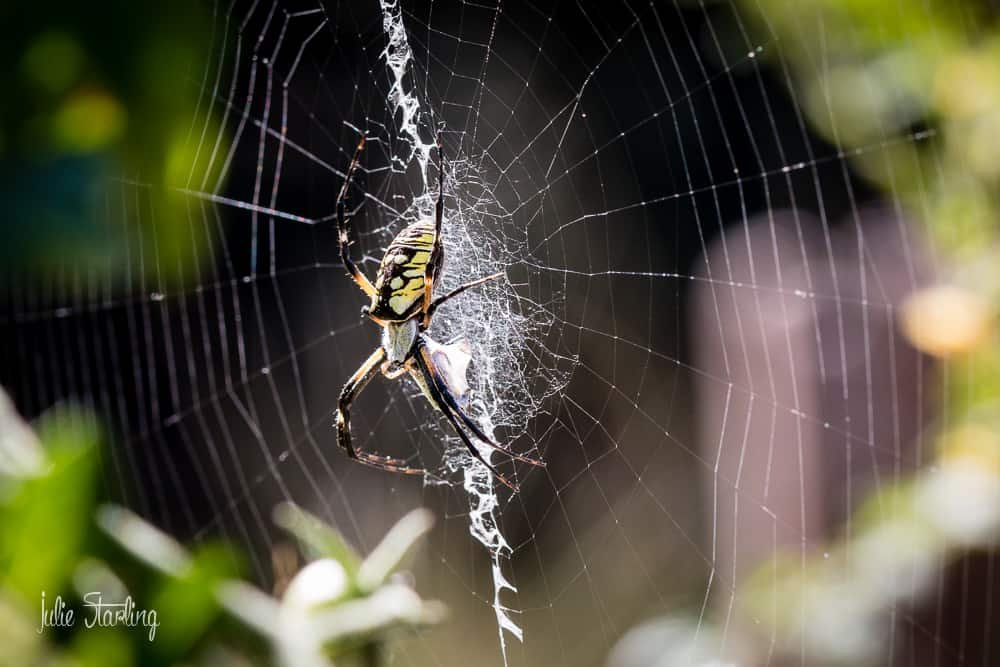
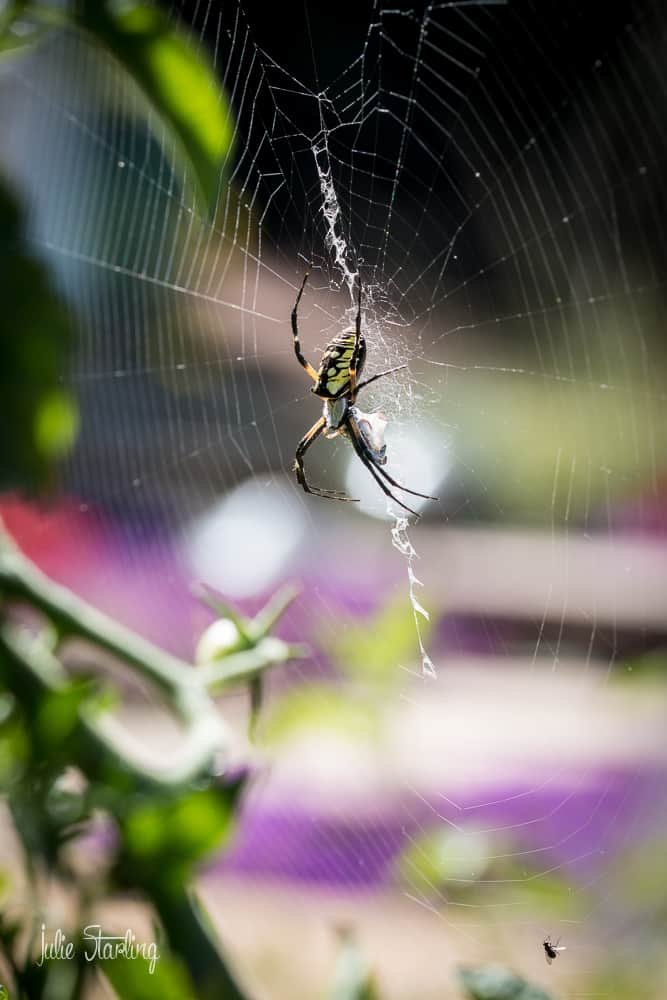
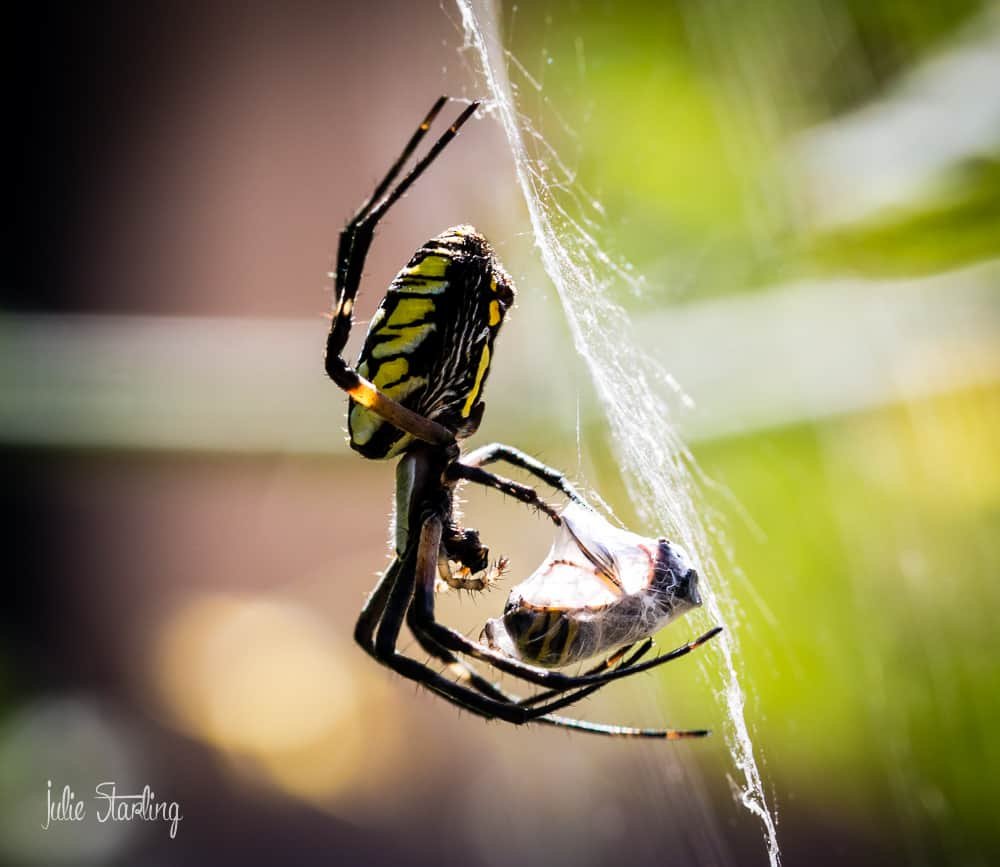
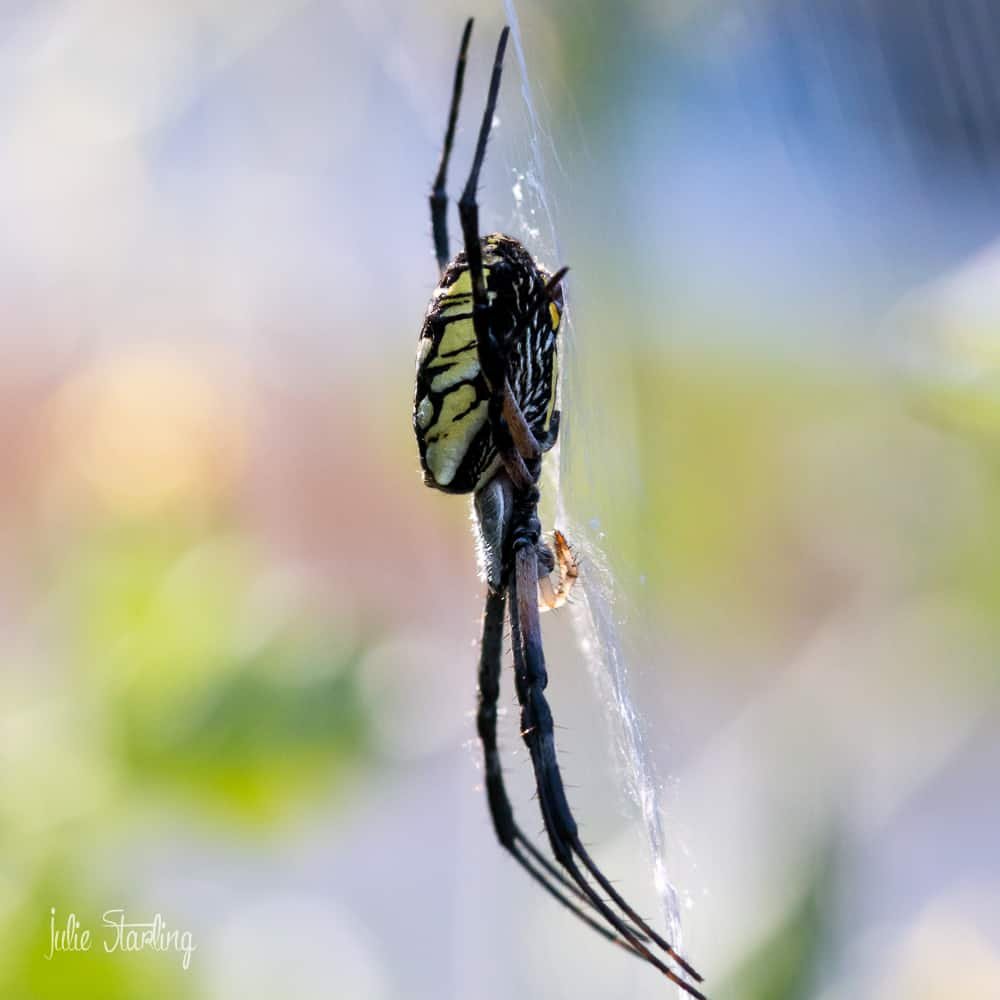
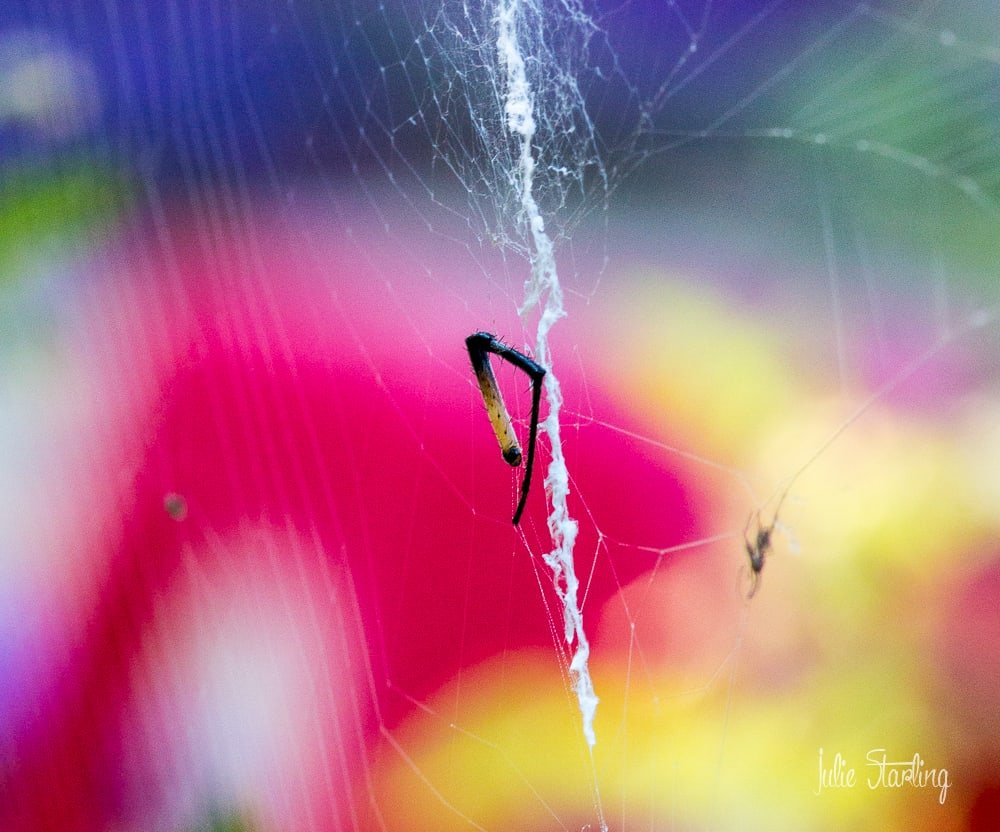
hello wild dingo its dennis the vizsla dog hay see??? eeven the offspring of lolth and shelob is not sayf in her own web!!! this is why i stay in the howse!!! farewel gertrude we hardly knew ye!!! ok bye